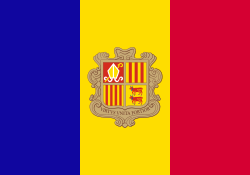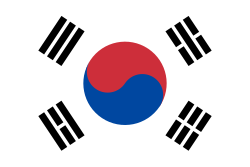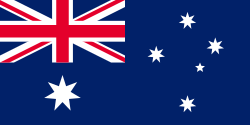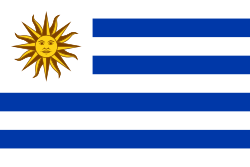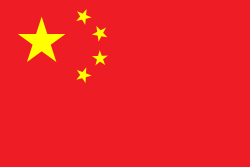Australian Open 2020 – čtyřhra juniorek
| Australian Open 2020 | |
|---|---|
| Vítězky: | |
| Finalistky: | |
| Výsledek: | 6–1, 6–2 |
| Soutěže | |
| mužská dvouhra (q) • mužská čtyřhra | |
| ženská dvouhra (q) • ženská čtyřhra | |
| smíšená čtyřhra | |
| dvouhra juniorů • čtyřhra juniorů | |
| dvouhra juniorek • čtyřhra juniorek | |
| Australian Open čtyřhra juniorek | |
| 2019 ◄◄ 2020 ►► 2022 | |
| Grand Slam 2020 čtyřhra juniorek | |
| Australian Open • French Open Wimbledon • US Open | |
Čtyřhra juniorek Australian Open 2020 probíhala ve druhé polovině ledna 2020. Do deblové soutěže australského tenisového grandslamu v Melbourne Parku nastoupilo třicet dva párů tvořených hráčkami, které splňovaly věková kritéria juniorské kategorie. Obhájcem titulu byl pár složený ze 17leté Japonky Nacumi Kawagučiové a o rok starší Maďarky Adrienn Nagyové,[1] která již nebyla způsobilá ke startu. Kawagučiová do turnaje nezasáhla.
Vítězem se stala čtvrtá nasazená dvojice složená ze 14leté Filipínky Alexandry Ealaové a o tři roky starší Indonésanky Prisky Madelyn Nugrohové, které ve finále zdolaly slovinsko-britskou dvojici Živa Falknerová a Matilda Mutavdzicová po hladkém dvousetovém průběhu 6–1 a 6–2.[2]
Každá z vítězek získala premiérový grandslamový titul kariéry a do juniorského kombinovaného žebříčku ITF si připsala 270 bodů. Spoluhráčky, které navázaly spolupráci v roce 2017, vyhrály celkově sedmou trofej.[2]
Filipínská hráčka trénující v Akademii Rafaela Nadala navázala na triumf krajana Francise Caseyho Alcantary z juniorského debla na Australian Open 2009.[2]
Nasazení párů
 Kamilla Bartoneová /
Kamilla Bartoneová /  Linda Fruhvirtová (semifinále)
Linda Fruhvirtová (semifinále) Polina Kuděrmetovová /
Polina Kuděrmetovová /  Robin Montgomeryová (1. kolo)
Robin Montgomeryová (1. kolo) Marija Bondarenková /
Marija Bondarenková /  Mai Napatt Nirundornová (1. kolo)
Mai Napatt Nirundornová (1. kolo) Alexandra Ealaová /
Alexandra Ealaová /  Priska Madelyn Nugrohová (vítězky)
Priska Madelyn Nugrohová (vítězky) Victoria Jiménezová Kasintsevová /
Victoria Jiménezová Kasintsevová /  Ane Mintegi del Olmoová (1. kolo)
Ane Mintegi del Olmoová (1. kolo) Linda Nosková /
Linda Nosková /  Oxana Selechmetěvová (čtvrtfinále)
Oxana Selechmetěvová (čtvrtfinále) Aubane Droguetová /
Aubane Droguetová /  Séléna Janicijevicová (čtvrtfinále)
Séléna Janicijevicová (čtvrtfinále) Back Da-yeon /
Back Da-yeon /  Weronika Baszaková (2. kolo)
Weronika Baszaková (2. kolo)
Pavouk
| Legenda | ||
|
|
|
Finálová fáze
| Semifinále | Finále | |||||||||||
| 1 | | 6 | 5 | [8] | ||||||||
| 4 | | 1 | 7 | [10] | ||||||||
| 4 | | 6 | 6 | |||||||||
| | 1 | 2 | ||||||||||
| | 4 | 6 | [8] | |||||||||
| | 6 | 4 | [10] | |||||||||
Horní polovina
Dolní polovina
Odkazy
Reference
V tomto článku byl použit překlad textu z článku 2020 Australian Open – Girls' Doubles na anglické Wikipedii.
- ↑ Anna Wynn. Amazing! Adrienn Nagy makes Hungarian tennis history during the Australian Open! [online]. Daily News Hungary, 2019-01-27 [cit. 2020-01-29]. Dostupné online. (anglicky)
- ↑ a b c Beatrice Go. Alex Eala wins first juniors Grand Slam title in 2020 Australian Open [online]. Rappler, 2020-01-31 [cit. 2020-02-04]. Dostupné online. (anglicky)
Externí odkazy
- Juniorský turnaj Australian Open 2020 [online]. Mezinárodní tenisová federace. Dostupné online.
Média použitá na této stránce
bendera Indonesia
Vlajka České republiky. Podoba státní vlajky České republiky je definována zákonem České národní rady č. 3/1993 Sb., o státních symbolech České republiky, přijatým 17. prosince 1992 a který nabyl účinnosti 1. ledna 1993, kdy rozdělením České a Slovenské Federativní republiky vznikla samostatná Česká republika. Vlajka je popsána v § 4 takto: „Státní vlajka České republiky se skládá z horního pruhu bílého a dolního pruhu červeného, mezi něž je vsunut žerďový modrý klín do poloviny délky vlajky. Poměr šířky k její délce je 2 : 3.“
The national flag of Kingdom of Thailand; there are total of 3 colours:
- Red represents the blood spilt to protect Thailand’s independence and often more simply described as representing the nation.
- White represents the religion of Buddhism, the predominant religion of the nation
- Blue represents the monarchy of the nation, which is recognised as the centre of Thai hearts.
Flag of Australia, when congruence with this colour chart is required (i.e. when a "less bright" version is needed).
See Flag of Australia.svg for main file information.Flag of Canada introduced in 1965, using Pantone colors. This design replaced the Canadian Red Ensign design.
Chinese Taipei Olympic Flag. According to the official website of Chinese Taipei Olympic Committee, Blue Sky(circle) & White Sun(triangles) above the Olympic rings is neither the National Emblem of the Republic of China, nor the Party Emblem of Kuomintang (KMT), but a design in between, where the triangles do not extend to the edge of the blue circle, as registered at International Olympic Committee in 1981 and digitally rendered in 2013. Besides, the blue outline of the five-petaled plum blossom is broader than the red one. Moreover, the CMYK code of the blue one and the Blue Sky & White Sun is "C100-M100-Y0-K0", and different from the Olympic rings (C100-M25-Y0-K0). Note that it's the only version recognized by IOC.
This is the national flag of Belgium, according to the Official Guide to Belgian Protocol. It has a 13:15 aspect ratio, though it is rarely seen in this ratio.
Its colours are defined as Pantone black, Pantone yellow 115, and Pantone red 032; also given as CMYK 0,0,0,100; 0,8.5,79,0; and 0,94,87,0.








